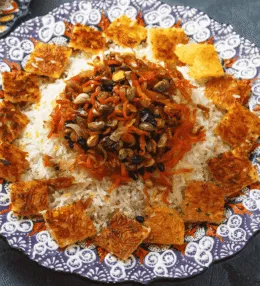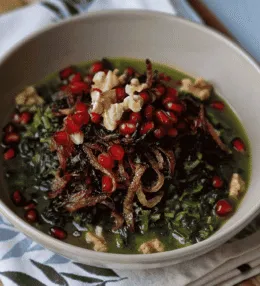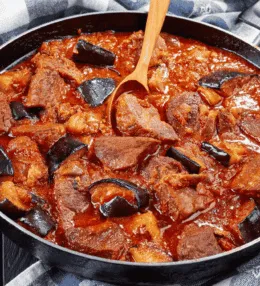
- View
Table of Contents
ToggleKalakukko is one of those rare dishes that carries with it a sense of place, tradition and quiet endurance. Hailing from the Savo region of eastern Finland, this hearty fish pie is not just a meal but a piece of the country’s rural identity, rooted in simple ingredients and time-honoured methods.
At first glance, it may appear unassuming, even rustic, but once sliced open, Kalakukko reveals its warm, savoury centre. For many Finns, it’s more than food on a plate, it’s a nostalgic nod to the kitchens of grandmothers and the stories of old farm life, wrapped in a golden rye crust.
Want to dive deeper into Finnish Cuisine? Don’t miss our post on 22 Traditional Finnish Foods to Try
What Is Kalakukko?
Kalakukko is essentially a loaf shaped pie filled with fish, usually vendace or perch, sometimes combined with pork and slices of bacon, then encased in a dense rye bread dough and baked for several hours until everything inside fuses into one tender, flavourful package.
It’s eaten sliced, often warm, and though it travels well and is just as satisfying served cold. Traditionally made in the home, it can still be found at Finnish markets and bakeries, especially in towns like Kuopio, where it remains a point of regional pride and an everyday delicacy.
Ingredients and Taste
The filling typically includes small freshwater fish like vendace, cleaned but left whole, layered with fatty cuts of pork and a pinch of salt. Some cooks add barley or chopped onions, but the core trio of fish, pork and rye dough is what defines the dish at its most authentic.
As it bakes slowly in a low oven, the rye shell becomes firm and nutty, locking in the juices and transforming the inside into a moist, savoury blend. The fish bones soften completely, giving way to a texture that is tender, rich and surprisingly smooth.
What makes Kalakukko stand out is the interplay between the earthy bread and the deep umami of the filling. It’s comforting, filling and quietly complex, the sort of dish that doesn’t show off but rewards slow eating and open curiosity.
A Taste of History
Kalakukko’s origins stretch back centuries to a time when food had to be practical, portable and sustaining. In rural Savo, it became a convenient way to preserve and transport a full meal, especially for farmers and woodsmen who spent long hours away from home.
It was a clever solution: protein and bread in one, baked together into a form that could survive travel and time without spoiling. Its name is something of a curiosity, too, as kukko typically means rooster, though there is no poultry in the dish.
Over time, what began as everyday sustenance became part of Finland’s culinary heritage. Today, Kalakukko is celebrated not just for its flavour, but for the story it tells about the resilience of rural life and the Finnish knack for turning simple ingredients into something quietly remarkable.
Eating Kalakukko is more than just trying a local dish. It’s a way to connect with Finland’s past, one slice at a time, firm crust, tender centre and all.

Finnish Kalakukko (Fish Pie)
Ingredients
For the dough:
- 400 g rye flour
- 100 g plain all-purpose flour
- 1 tsp salt
- 250 ml lukewarm water
- 1 tbsp rapeseed oil or mild vegetable oil
For the filling:
- 400 g boneless freshwater fish vendace, perch or salmon as substitute, skin-on
- 300 g fatty pork belly thinly sliced
- 1 medium onion finely chopped
- 1 ½ tsp salt
- ½ tsp ground white pepper
- Optional: a few sprigs of fresh dill for aroma, not traditional in all regions
Instructions
- To begin, preheat your oven to 225°C (fan 200°C). In a large mixing bowl, combine rye flour, plain flour, and salt. Gradually add lukewarm water while mixing with your hand or a wooden spoon until a firm, pliable dough forms. Add oil last and knead for 5–7 minutes until smooth but slightly tacky. Cover and let it rest while preparing the filling.
- Continue by preparing the filling. Slice the pork belly thinly for even cooking. If using larger fish, cut into bite sized pieces but keep the skin on, it helps retain moisture and adds flavour. Mix the pork, fish, onion, salt, and white pepper in a bowl. Stir gently to avoid breaking the fish. Optional dill can be added at this stage.
- Lightly flour your work surface and roll out the dough into an oval about 1cm thick. It should be large enough to encase the entire filling with some room to seal the edges tightly.
- Place half the filling mixture in the centre of the dough, shaping it into a low mound. Layer the remaining filling on top, gently pressing to form a compact loaf shape. Keep at least a 4–5cm border of dough on all sides.
- Fold the dough over the filling from both sides, then tuck in the ends, pinching the seams together tightly to seal. Moisten the edges with a bit of water if needed for a stronger seal. Turn the loaf seam side down on a baking sheet lined with parchment.
- With damp hands, smooth out the surface of the dough to prevent cracking during baking. Use your fingers to patch any weak spots, this crust must hold in all the steam and flavour for hours.
- Place the pie in the oven and bake at 225°C for 30 minutes. This initial high heat sets the crust and starts sealing in the juices.
- After 30 minutes, reduce the oven temperature to 125°C. Wrap the pie loosely in baking paper or foil to prevent drying out. Continue baking for 4–5 hours. This slow bake softens the bones (if using whole fish) and melds the filling into a tender, flavourful centre.
- Resist slicing into the pie immediately, rest it for at least 20 minutes out of the oven. The filling continues to firm as it cools, making slicing easier and neater.
- Serve warm in thick slices, ideally with a pat of butter and a glass of cold milk or buttermilk. Traditionally eaten as a standalone meal, it also pairs beautifully with pickled cucumber or beetroot for contrast. For presentation, slice diagonally and serve on wooden boards or rustic platters.
Nutrition
You May Also Like






